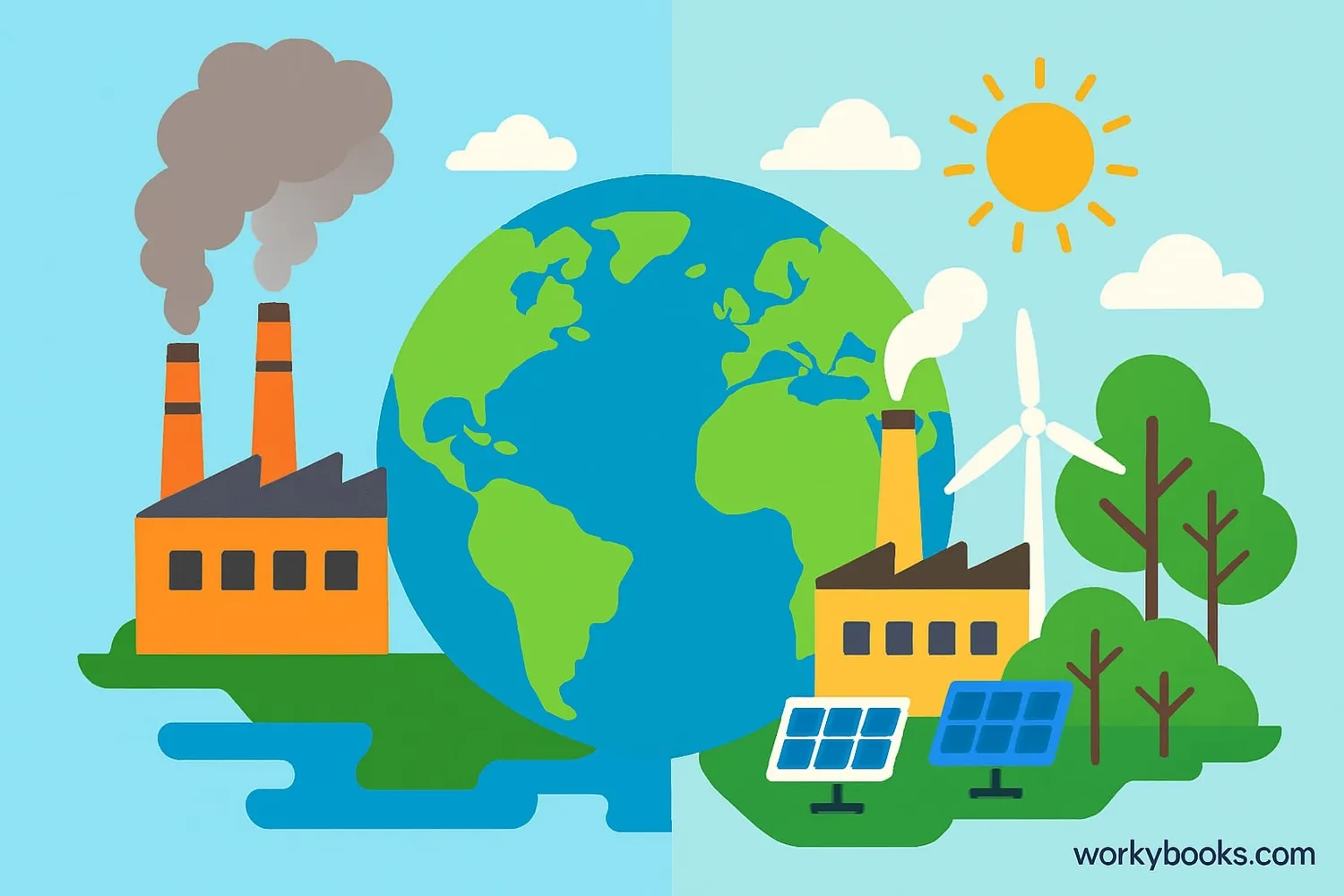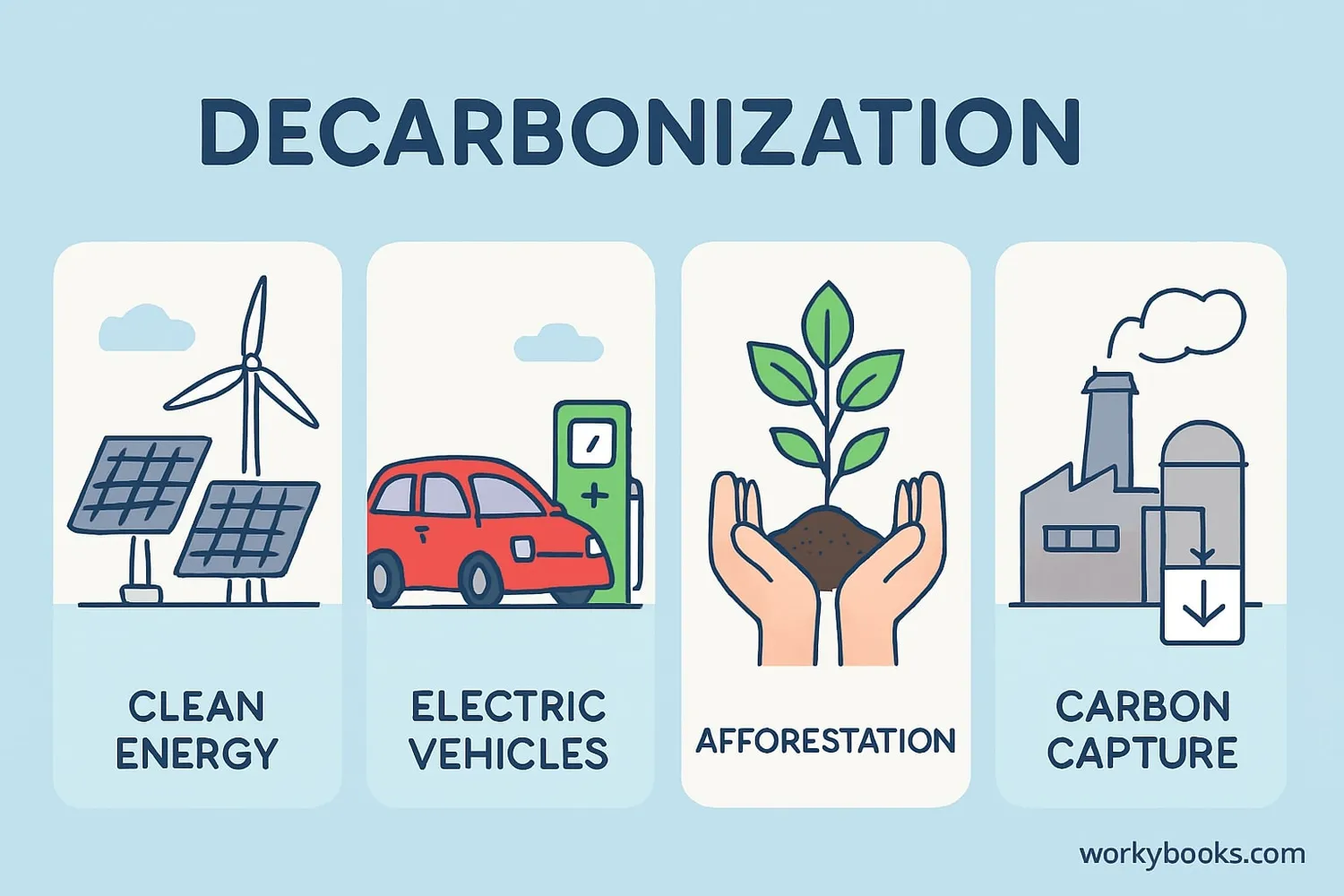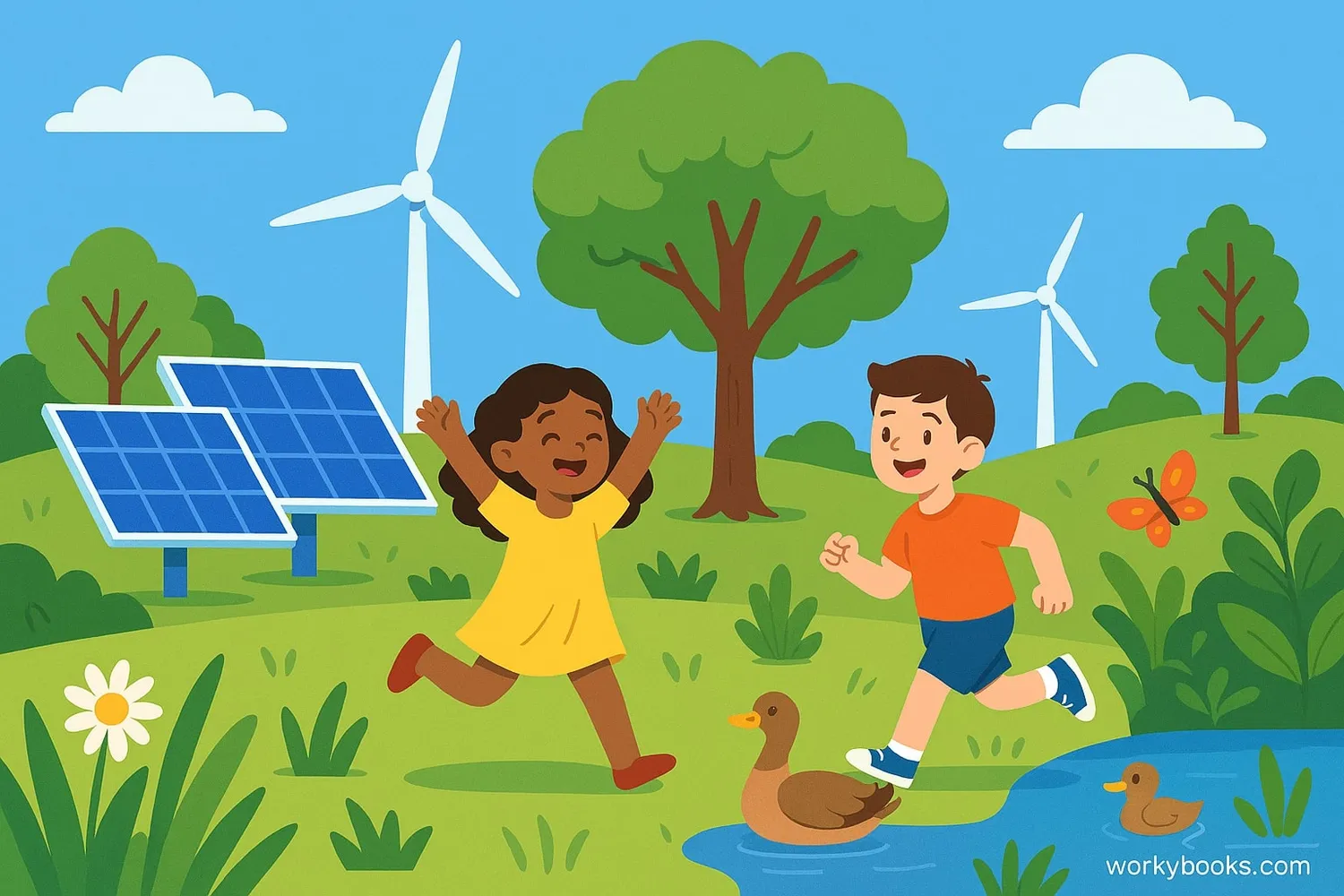Decarbonization - Definition, Examples, Quiz, FAQ, Trivia
Discover how we can reduce carbon emissions and create a healthier planet!
What is Decarbonization?

Decarbonization is the process of reducing carbon dioxide (CO₂) emissions to help our planet. It's like cleaning up the air we breathe!
When we burn fossil fuels like coal, oil, and gas for energy, we release carbon dioxide into the atmosphere. This CO₂ acts like a blanket around the Earth, trapping heat and causing global warming. Decarbonization helps us transition to cleaner energy sources and reduce this pollution.
Think of it as helping the Earth "breathe easier" by reducing the amount of harmful gases we put into the air. It's an important part of fighting climate change and protecting our planet for future generations.
Science Fact!
Before the Industrial Revolution, Earth's atmosphere contained about 280 parts per million of CO₂. Today, it's over 415 parts per million!
How Decarbonization Works

Decarbonization involves many different approaches to reduce carbon emissions. Here are the main ways we can achieve this:
Clean Energy
Using renewable sources like solar, wind, and hydropower instead of fossil fuels
Energy Efficiency
Using less energy through better technology and conservation
Electrification
Switching to electric vehicles and appliances powered by clean energy
Carbon Capture
Developing technology to capture and store CO₂ emissions
Nature Solutions
Protecting forests and planting trees that absorb CO₂
The goal of decarbonization is to reach net zero emissions. This means that any remaining carbon emissions are balanced by removing an equivalent amount from the atmosphere. It's like making sure that for every piece of trash we create, we clean up an equal amount somewhere else.
Energy Transition!
In 2020, renewable energy sources generated more electricity than coal in the United States for the first time in over 130 years!
Why Decarbonization is Important

Decarbonization is crucial for creating a sustainable future. Here's why it matters so much:
Fights Climate Change
Reduces global warming and extreme weather events
Cleaner Air
Reduces pollution that causes health problems
Protects Nature
Preserves ecosystems and biodiversity
By working toward decarbonization, we can:
• Create healthier communities with cleaner air
• Protect vulnerable species and ecosystems
• Develop new technologies and green jobs
• Ensure a stable climate for future generations
Decarbonization is about creating a sustainable world where humans and nature can thrive together. It's one of the most important challenges of our time, and everyone can play a part!
Decarbonization Quiz
Test your knowledge about decarbonization with this quiz! Answer all 5 questions to see how much you've learned.
Frequently Asked Questions
Here are answers to some common questions about decarbonization:
Decarbonization Trivia
Discover some amazing facts about decarbonization and climate solutions!
Solar Power Growth
Every hour, enough sunlight reaches Earth to power the entire world for a year! Solar panel costs have dropped 90% in the last decade, making this clean energy more accessible.
Electric Vehicles
The first electric car was invented in 1832 - before gasoline cars! Today, electric vehicles produce 50-70% fewer emissions over their lifetime compared to gasoline cars.
Forest Power
A single mature tree can absorb 48 pounds of carbon dioxide per year. The Amazon rainforest absorbs 2 billion tons of CO₂ annually - that's about 5% of global emissions!
Wind Energy Giants
Modern wind turbines are taller than the Statue of Liberty! A single rotation of a large turbine blade can power a home for 29 hours. Offshore wind farms can power millions of homes.





